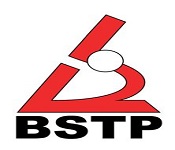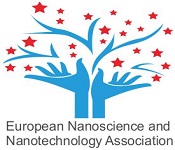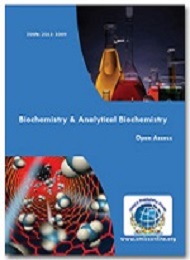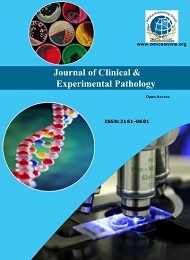Theme: An Insight into advancement of medicine by extending the frontiers of clinical chemistry and laboratory medicine
ICCM 2017
Conference series LLC Conferences invites all the participants from all over the world to attend ‘2nd Clinical Chemistry and Laboratory Medicine Conference’, during September 28-29, 2017 in Atlanta,USA which includes prompt keynote presentations, Oral talks, Poster presentations and Exhibitions.
In the light of this theme, the conference series aims to provide a forum for international researchers from various areas of chemistry, pharmacy, clinical chemistry and Laboratory Medicine by providing a platform for critical analysis of new data, and to share latest cutting-edge research findings and results about all aspects of Clinical Chemistry and Laboratory Medicine. Clinical chemistry is the area of clinical pathology that is generally concerned with analysis of bodily fluids for diagnostic and therapeutic purposes. Clinical Chemistry is a global platform to discuss and learn about Clinical Pathology, Clinical Endocrinology , Medical Biochemistry , Immunology Future advances in laboratory medicine, manufacturing companies, pharma companies regarding clinical chemistry It includes the study of the pathology of associate degree organism, organ system, or wellness with regard to the system, immunity, and immune response. Laboratory medicine is that the branch of drugs during which specimens of tissue, fluid or different matter examined outside of the person, typically within the laboratory.
The global clinical chemistry analyzers market was estimated at $8,965 million in 2014. This market is expected to grow at a CAGR of 5.52% between 2014 and 2019, to reach $11,728.01 million in 2019.The clinical chemistry analyzers market is segmented on the basis of products as analyzers, reagents and other products. Analyzers segment is further divided on the basis of sizes into four segments: Small Sized (400-800 Test/H), Medium Sized (800-1,200 Tests/H), Large Sized (1,200-2,000 Tests/H), Very large Sized (2,000 Tests/H). The analyzer product segment had the largest share of the clinical chemistry analyzers market in 2014, whereas the reagents product segment is expected to grow at the highest CAGR between 2014 and 2019. Reagents segment is further categorized into calibrators, controls, standards and other reagents. The reagents product segment is expected to grow at the highest CAGR between 2014 and 2019.
ConferenceSeries Ltd organises 1000+ global events every year across the globe with support from 1000+ more scientific societies and publishes 700 open access journals which contain over 50000 eminent personalities, reputed scientists as editorial board members
Track 1: Principles of Clinical Chemistry
Clinical chemistry is that field of clinical pathology involved with analysis of body fluids. The discipline originated within the late nineteenth century with the use of simple chemical tests for diverse elements of blood and waste product. After this, totally different clinical biochemistry techniques were applied at the side of the use and live of catalyst activities, spectrophotometry, action, and biological assay. Endocrine pathology is that the subspecialty of surgical pathology that deals with the diagnosing and characterization of growth and non-neoplastic diseases of organs of the system, as well as the thyroid, parathyroid gland, secreted exocrine gland, and adrenal glands. Pharmacology is additionally a branch of biological chemistry, and medicines committed the study of the adverse effects of chemicals on living organisms. A diagnosing, may be an academic degree array of tests performed on excreta, and one in all the foremost common ways of disease susceptibility. A faecal occult check involves the gathering and analysis of BM to diagnose the presence or absence of a medical condition.
European Federation of Clinical Chemistry and Laboratory Medicine; American Association of Clinical Chemistry ; Czech Society of Clinical Biochemistry.
Track 2: Clinical Pathology
Clinical pathology cares with the identification, treatment and interference of health problem. Clinical pathologist’s unit doctors with special coaching job World Health Organization sometimes direct all of the special divisions of the laboratory research, which might embrace the bank, clinical chemistry and biology, toxicology, haematology, medical specialty and medical science, and biological science. Hematopathology or hemopathology is that the branch of pathology that studies diseases of haemopoietin cells. Transfusion is that the branch of medication that is committed the transfusion of blood and blood components. Medical biological science may be a branch of medication committed the hindrance, identification and treatment of clinical infectious diseases. Immunopathology may be a branch of medication that deals with immune responses reacted with wellness. It includes the study of the pathology of associate degree organism, organ system or wellness with regard to the system, immunity and immune responses.
American Society for Clinical Pathology; American Society of Hematology; World Association of Societies of Pathology and Laboratory Medicine.
Track 3: Clinical Endocrinology
An in depth market research by the analysts shows that the global endocrinology market will grow steadily at a CAGR of more than 6%. An increase in the prevalence of hormone-related disorders such as diabetes, hypogonadism, hypothyroidism, and hyperthyroidism is the key driving factor for growth of this market. The prevalence of diabetes is on the rise owing to obesity, unhealthy diet, and lack of physical activity among individuals. According to many research studies, nearly 415 million individuals were affected by diabetes in 2015 and this number is likely to reach 642 million by 2040. Moreover, with the growing prevalence of hypogonadism in men due to diabetes and heart or renal diseases, it is estimated that the intake of medications will increase. This increase in the intake of medications will propel the prospects for growth in this market during the next four years.
European Hematology Society; International Society for Laboratory Hematology ; Haematology Society of Australia & New Zealand .
Track 4: Toxicology
Toxicology is the study of the undesirable effects of chemicals on living organisms. It is the study of symptoms, mechanisms, treatments and detection of poisoning, especially the poisoning of people.
The global market for selected healthcare-acquired infection (HAI) treatments was valued at nearly $15.2 billion in 2014. This market is expected to increase from nearly $17.1 billion in 2015 to $23 billion by 2020, with a compound annual growth rate (CAGR) of 6.1% from 2015 to 2020.
European Hematology Society; International Society for Laboratory Hematology ; Haematology Society of Australia & New Zealand .
Track 5: Immunology
Immunology is that area of pharmacological sciences dealing with the selective variation of specific immune responses and, in particular, of immune cell subsets. The first generation of immune-modulating agents included molecules drawn from oncology. The second generation, notably cyclosporine, exploited some natural agents able to block several signal transduction pathways.
To deal with the expanding field of Immunology, some limitations are required. However, in recent years, the advances about how the immune system works have identified several molecular targets suitable for more selective modulation of immune function. These targets can be broadly divided into surface molecules and soluble mediators. Surface molecules play a fundamental role in antigen recognition, immune response activation, homing and effector functions. Soluble mediators are involved in lymphocyte proliferation and differentiation, inflammatory response and cell recruitment.
European Hematology Society; International Society for Laboratory Hematology ; Haematology Society of Australia & New Zealand.
Track 6: Medical Pathology
Pathology is a branch of medication that arrangements with the examination of the organs, tissues, microorganisms, and body liquids to enhance the finding, treatment and fundamental comprehension of human ailment by clinical administration, training and research. Pathology is a root for the finding of the perish and is a noteworthy restorative practice in current science. The Moto of the meeting is to look forward into the progression, research's, accomplishments in the field of pathology.
European Hematology Society; International Society for Laboratory Hematology ; Haematology Society of Australia & New Zealand.
Track 7: Clinical Biochemistry
Biochemistry is a multidisciplinary field with research interests covering all aspects of modern molecular and cellular biochemistry. Biochemistry is often considered as a tool to investigate and to study molecular biology. It deals with the structure, function and interactions amongst biological macromolecules. Biochemistry has its applications in various fields. The findings of biochemistry are applied primarily in medicine, nutrition, and agriculture. In medicine, biochemists investigate the cause and cure for the disease. In nutrition, it leads to maintain health and effects of deficiency of nutrients. In agriculture, biochemists investigate soil and fertilizers, and try to discover ways to improve crop cultivation, storage and pest control.
European Hematology Society; International Society for Laboratory Hematology ; Haematology Society of Australia & New Zealand.
Track 8: Medical Biochemistry
Medical Biochemistry is that branch of medicine concerned with the biochemistry and metabolism of human health and disease. The medical biochemist is trained in the operation and management of clinical biochemistry laboratories, and acts as a consultant in all aspects of their use. The medical biochemist directs clinical laboratories, consults, diagnoses and treats patients with a variety of metabolic disorders and biochemical abnormalities. Medical biochemistry addresses the functioning of normal and diseased organisms from a biochemical point of view. Through modules in neurodegeneration, cardiovascular disease and immunology, one will develop a strong understanding of the implications of biochemistry within medicine alongside the research and experimental skills.
European Hematology Society; International Society for Laboratory Hematology ; Haematology Society of Australia & New Zealand.
Track 9: Clinical Microbiology
This track will focus in particular on the most current research related to the laboratory diagnosis of human and animal infections and the role of the laboratory in both the management of infectious diseases and the elucidation of the epidemiology of infections, the latest developments in clinical microbiology and immunology, providing the current state of knowledge in the field, as well as balanced, thought-provoking perspectives on controversial issues.
European Hematology Society; International Society for Laboratory Hematology ; Haematology Society of Australia & New Zealand.
Track 10: Clinical Examination of Blood Serum
The serum protein electrophoresis (SPEP) test measures specific proteins in the blood to help identify some diseases. Serum protein electrophoresis is most often done to help diagnose and monitor a wide variety of conditions. These include:
Some forms of cancer.
Problems with the kidneys or liver.
Problems with the immune system.
Conditions that lead to poor nutrition.
A blotting assay shows good sensitivity (81%) and specificity (97%) for detecting serum antibodies in patients with Neuromyelitis Optica (NMO). By using western blot, we were able to distinguish serum immunoreactivity against either of the two isoforms, showing that antibodies recognizing the linear isoform are specific for NMO. Hemoglobin (Hgb) and hematocrit (Hct) are often used interchangeably to evaluate anemia in dialysis patients. Hgb is the preferred method in most European countries, while Hct is generally used by clinicians in the United States. Plasma protein tests area unit where components of blood tests that observe the quantity of proteins within the blood and its components.
European Hematology Society; International Society for Laboratory Hematology ; Haematology Society of Australia & New Zealand .
Track 11: Clinical examination of urine
Urine pathology check results should be understood victimization the reference vary provided by the laboratory medicine that performed the check or victimization info provided by the check strip/device manufacturer. To boot to the substances mentioned, different tests embody an outline of color and look. All routine urinalysis ought to begin with a physical examination of the excreta sample. This examination includes assessment of volume, odour and look, relative density, osmolality. Proteinuria is the urine pathology indicates presence of associate degree far more than blood serum biomarkers proteins within the excreta. The excess macromolecule catalysis inside the excreta usually causes the excreta to become foamy, though foamy excreta can also be caused by animal pigment within the excreta retrograde ejaculation, trace elements of urine pneumaturia as a result of a fistula or clinical medicine like anodyne. Acetonuria may be a medical condition within which organic supplements bodies are gift within the excreta.
Italian Society of Clinical Biochemistry and Clinical Molecular Biology; Spanish Society for Clinical Biochemistry and Molecular Pathology; Swedish Society for Clinical Chemistry.
Track 12: Therapeutic Drug Monitoring
Therapeutical drug monitoring is defined as the clinical laboratory measurement of a chemical parameter that will directly influence drug prescribing procedures after appropriate medical interpretation. TDM refers to maintaining blood drug or plasma concentrations within a targeted therapeutic range or window for the individualization of drug dosage. Drug Monitoring begins after the drug is first prescribed, and involves determining an initial dosage regimen appropriate for the clinical condition and patient characteristics like age, organ function, weight and concomitant drug therapy.
European Society for Prevention Research;American Society for Automation in Pharmacy
Track 13: Laboratory Science and Clinical Laboratory Medicine
Biochemistry, generally called biological chemistry, is that the study of chemical processes within and regarding living organisms. By dominant information flow through chemistry signalling and so the flow of energy through metabolism, medical biochemistry processes build to the standard of life. Over the last forty years, chemistry has become so winning at explaining living processes that presently most areas of the life sciences from biology of cell to medication are engaged in chemistry metabolomics analysis. the foremost focus of pure system biochemistry is in understanding but biological molecules build to the processes that occur within living cells, that in turn relates greatly to the study and understanding of whole organisms.Laboratory medicine is that the branch of drugs during which specimens of tissue, fluid, or different matter ar examined outside of the person, typically within the laboratory. Some fields of laboratory medication embody chemistry, cytology, hematology, microscopic anatomy and pathology
Canadian Society for Medical Laboratory Science; Japanese Society of Laboratory Medicine ;Ontario Association of Medical Laboratories
Track 14: Advances in Laboratory Sciences
Biochemistry, generally called biological chemistry is that the study of chemical processes within and regarding living organisms. By dominant information flow through cell signalling and so the flow of energy through metabolism; medical biochemistry processes build to the standard of life. Over the last forty years, chemistry has become so winning at explaining living processes that presently most areas of the life sciences from biology of cell to medication are engaged in chemistry metabolomics analysis. The foremost focus of pure system biochemistry is in understanding but biological molecules build to the processes that occur within living cells that in turn relates greatly to the study and understanding of whole organisms. Laboratory medicine is that the branch of drugs during which specimens of tissue, fluid or different matter examined outside of the person, typically within the laboratory. Some fields of laboratory medication embody chemistry, cytology, haematology, microscopic anatomy and pathology.
African Society for Laboratory Medicine; Asian Society for Clinical Pathology and Laboratory Medicine; American Society for Clinical Laboratory Science.
Track 15: Advances in Biological Chemistry
Metabolic drugs may be a subspecialty of either clinical pathology or general medicine. Chemical pathologists with subspecialty coaching in metabolic drugs would lead a full clinical and laboratory organic chemistry service and supply clinics in one or 2 of the metabolic drugs areas. Research includes artistic work undertaken on a scientific management basis therefore on extend the stock of knowledge likewise as data of humans, culture and social context and so the utilization of this stock of data to plot new biomedical applications. It's accustomed establish or ensure facts, affirm the results of previous work, solve new or existing issues, support theorems, health care context or develop new theories to check the validity of instruments, procedures or experiments, analysis could replicate parts of previous comes or the project as an entire. The first functions of basic analysis documentation, drug discovery process, interpretation or the analysis and development of laboratory medicine, drug chemistry of ways and systems for the advancement of human information.
Canadian Society of Clinical Chemists ; German Society for Clinical Chemistry ; Hong Kong Society of Clinical Chemistry .
Track 16: Clinical Chemistry and Laboratory Market.
A medical laboratory or clinical laboratory research could be a laboratory wherever tests square measure done on clinical specimens so as to urge info regarding the health of a patient as concerning the identification, treatment, and interference of sickness. A administrative body could be a public authority or administrative body to blame for sweat autonomous authority over some space of human action in an exceedingly regulative or superordinate capability producing is that the production of merchandise to be used or sale exploitation labour and machines, tools, chemical and biological process or formulation. The term may ask a diffusion of human action from handicraft to high school and some home medical devices but is most commonly applied to industrial chemistry production, inside that raw materials square measure remoulded into finished product on an outsized scale. The pharmaceutical trade develops produces and markets medication or prescribed drug and developed drugs to be used as medications. Pharmaceutical corporations might deal in generic or complete medications and medical devices they're subject to a spread of laws and laws that govern the patenting, testing, safety, effectiveness and selling of medication.
Balkan Clinical Laboratory Federation; Texas Association for Clinical Laboratory Science; British Columbia Society of Laboratory Medicine.
The global market of Clinical Chemistry in 2014 was $8,965 million, and it CAGR market growth expected to 5.52% from 2014 to 2019 and it reaches to $11,728.01 million in 2019. Clinical pathology & laboratory pathology market is one of the fastest growing market in the country and its includes several factors like health care spending, awareness of health related concern, high prevalence of diseases, increasing incidence on lifestyle diseases, penetration of health care insurance are drivers in the market that leads to continuous rise of chronic diseases and global market for clinical pathology is expected to reach $1.1 billion by 2019, digital pathology market will reaches $5.6 billion by 2020 and it provide plan to go in future. Since last decade the global endocrinology market was grown steadily at a CAGR more than 6% over the forecast period. Based on the research studies more than 415 million individuals were affected by diabetes in 2015 and it reaches to 642 million in 2040 and that leads to increasing the intake of medications and that increase the growth of market for next four years. The global in vitro toxicology testing market was USD 14.15 billion in 2016 and it is expected to reach USD 27.36 Billion by 2021,at a CAGR of 14.1% from 2016 to 2021. The global market for immunology was expected for continuous growth and it reaches to $61.5billion in 2015, and in 2022 it expected to be $74.2 billion and its compound annual growth rate is 2.71%.

The global healthcare outsourcing market for medical pathology and pharmaceutical is estimated to control around 65% of total market in 2021.Clinical biochemistry and clinical diagnostic are the most attractive segment in market index and its indexing is about 3.5 for the forecast period, according to the global life science instrumentation market is projected to reach USD 66.52 Billion by 2021 and CAGR is 6.8% for 2016 to 2021.

The global market for clinical microbiology valued USD 8.4billion in 2015 and it decreases to USD 3.35 billion in 2016 and will reaches to USD 5.77 billion by 2021,CAGR growing at 11.5% from 2016 to 2021.The global IVD( Invetro Diagnosis) market for clinical examination of blood serum is valuated U$$46.0 billion and it expected to reach U$$74.2 billion by the end of 2018 and there is a positive growth at a CACR of 7.1% between 2012 and 2018
GLOBAL IVD Market
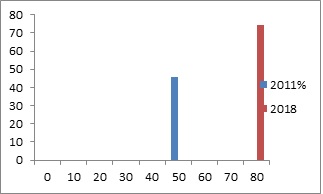
The global urinalysis market for clinical examination of urine was USD 1.32 billion in 2016 and it expected to reach USD 1.91 billion by 2021 at a CAGR of 7.6%.The global therapeutic drug monitoring market was valued USD 1.77 billion in 2015 and it will be expected to reach over USD 3.37 billion by 2024 and shows significant growth in CAGR over the last few years. The global analytical laboratory services market of clinical medicine will be projected to reach USD 333.8 million by 2021 from USD 202.8 million in 2016 at a CAGR is about 10.5% during the forecast period and according to service market size the market analysis was USD 196.9 billion in 2015 and with 6.4% of CAGR during 2016 to 2024.
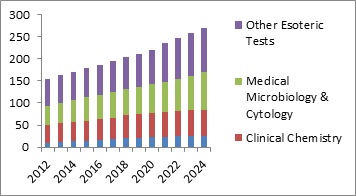
The global CBRN security market was expanded to US$9.13 in 2014 and is expected to reach US$11.92 by the end of 2021 and shows positive expand of 3.8% CAGR from 2015 to 2021.

Conference Highlights
- Principles of Clinical Chemistry
- Clinical Pathology
- Clinical Endocrinology
- Toxicology
- Immunology
- Medical Pathology
- Clinical Biochemistry
- Medical Biochemistry
- Clinical Microbiology
- Clinical Examination of Blood Serum
- Clinical Examination of Urine
- Therapeutic Drug Monitoring
- Laboratory Science and Clinical Laboratory Medicine
- Advances in Laboratory Sciences
- Advances in Biological Chemistry
- Clinical Chemistry and Laboratory Market.
To share your views and research, please click here to register for the Conference.
To Collaborate Scientific Professionals around the World
| Conference Date | September 28-29, 2017 | ||
| Sponsors & Exhibitors |
|
||
| Speaker Opportunity Closed | Day 1 | Day 2 | |
| Poster Opportunity Closed | Click Here to View | ||
Useful Links
Special Issues
All accepted abstracts will be published in respective Our International Journals.
- Biochemistry-and-analytical-biochemistry
- Biochemistry-physiology-open-access
- Clinical-experimental-pathology
Abstracts will be provided with Digital Object Identifier by








